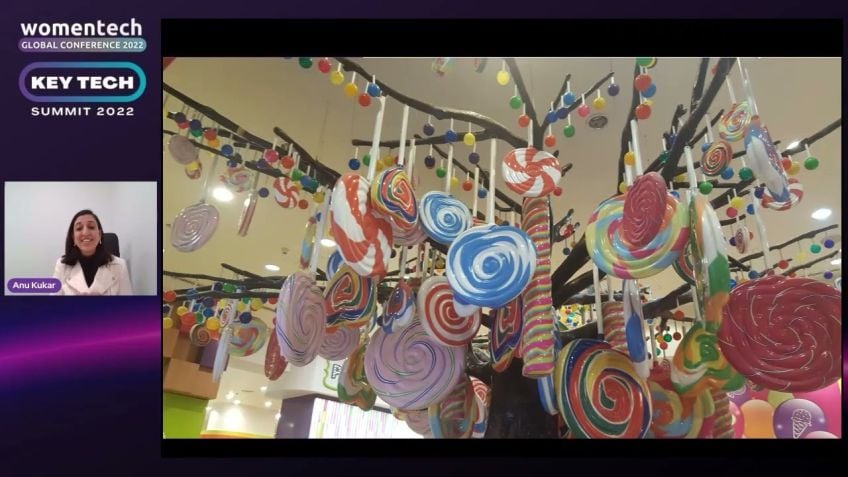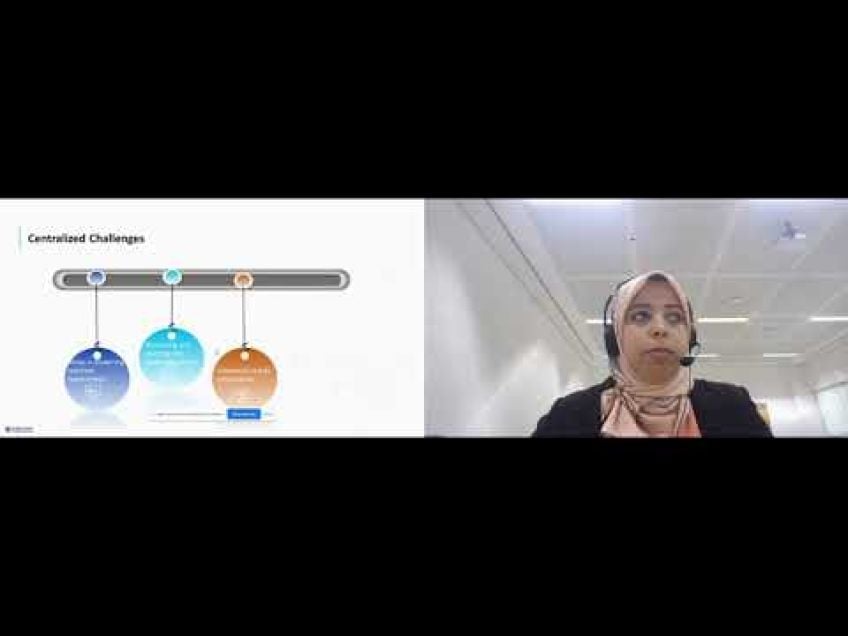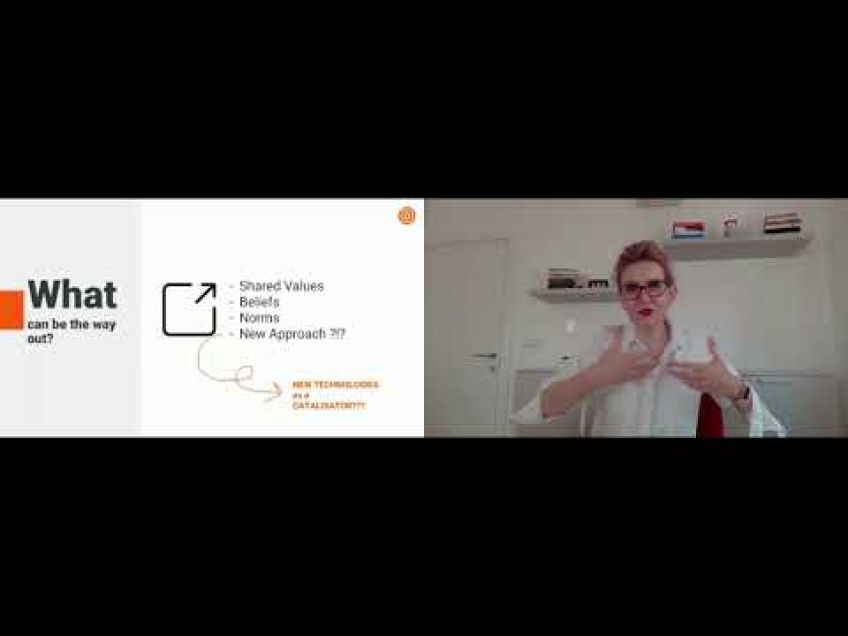Automation: Overcoming the cultural gab between IT and OT
The Evolution of Industrial Automation and the importance of Change Management:
An Update from a McKinsey Report
It's fascinating to look back at reports generated a few years ago and evaluate if the predictions held true. Several years back, I came across a report from McKinsey discussing the future of IoT projects and automation's impact on the marketplace.
More than two years later, I revisited this report and found that the experiences were far from what they initially predicted. The report mentioned something it called a "pilot purgatory" which described scenarios where companies launch pilot projects that don't turn out as expected, causing them to hesitate towards initiating another automation project. One of the main culprits behind these situations, according to the report, was poor change management.
The Intersection of Operations and IT
Understanding this dynamic requires an examination of operational professionals' value systems and that of IT professionals. Noticeably, these two groups view and approach work differently.
Operational professionals, especially during the COVID-19 pandemic, cannot easily transition to remote work given the nature of their roles. They work with specially designed machinery and focus on generating products while maintaining a particular quality and meeting deadlines.
On the other hand, IT professionals often operate remotely. Their work involves standardized systems and they prioritize data security and integrity.
The New Approach: Collaboration between IT and OT
This difference in approaches led to a crucial question: how could IT and OT professionals collaborate effectively for successful automation projects?
After deep dive research, I found most articles simply recommended gathering both parties on the same table and getting them to agree—a somewhat vague and unsatisfactory recommendation.
Taking a different approach, I delved deeper into the concept of progress, considering it as something individualistic, rather than societal. By bringing people together on a project and discussing what individual progress would look like in terms of an automation project, teams could then develop a shared goal.
Visualizing the Process and Identifying Fallbacks
Despite a shared goal, IT and OT professionals don't always speak the same language—this is where visualization comes into play. Sharing pictures or diagrams can help keep conversations going and improve mutual understanding.
Pitfalls and Fallback Solutions in Automation Projects
The following are key components to consider:
- It is essential to plan for any potential pitfalls in the process.
- Risk analysis plays a crucial role in identifying these potential hiccups.
- Having fallback solutions ready improves the resiliency of the project.
- Consider leveraging pre-existing solutions as fallbacks, especially if they served the purpose effectively prior to the proposed automation process.
Interchanging Buzzwords with Concrete Examples
Finally, when discussing automation solutions with stakeholders, swapping buzzwords for concrete, tangible examples makes communication more effective and promotes a clearer understanding of the process and benefits. Using relatable examples not only simplifies understanding but also paints a more accurate picture of the potential outcomes.
Conclusion
Through exploring the evolving landscape of industrial automation, this article underscored the importance of change management, clear communication and collaboration within automation projects. Using concepts such as personalized progress, practical visualizations, and concrete examples can help bridge the gap between IT and OT professionals, leading to more successful, efficient, and robust automation projects.
Video Transcription
Yeah. Hello. And and yeah. My time zone from Germany. Also, good afternoon. I want to start with, telling you about a report I have recently read from McKinsey.And it's already two and a half years old, but it kept my attention because it was a recap of, yeah, report they did in 2015 about, how IoT projects, how authorization will develop in the markets. And so as it was catching me, I read through all the 90 pages. But the essence of it was and it's quite interesting for the topic I am talking, about today was that it was far away from what they have expected. IoT IIoT and automation projects will enter the industry. Yeah. So it fell apart from from what they have estimated in 2,015. And, something what they say or what they call a pilot priority has happened.
So they say that companies have done, first pilot projects and they were not working very fine. So they kind of stopped or they said they hesitated to have another automation project. Yeah. So, and one of the the causes they they also said is that the change management maybe is a problem of that. And so this fits exactly to, my topic today. So I wanted to start with that little fact. My name is Emily. I'm coming from Wurzburg in Germany. I hold a degree in IT and also in engineering science. And so since university time, I'm a traveler between the world of IT and OT. I'm working in marketing and coding technology for over 16 years now. And during that time, I could accompany, automation projects in different markets and but also from different perspectives.
At the moment, I'm working for Konig and Bauer. This is the oldest printing manufacturer in the world, and I'm working there as a product manager. So I'm even I'm working as a product manager, I'm still involved in automation projects from time to time. So I also see the latest developments about this. And, when I'm involved in this automation project, there are things that are reoccurring, like, again and again. Yeah. So we are sitting with the potential customers on the table. We are discussing with them solution about automation, and, we're bringing them solutions that are well established in in other industries maybe already, and they are nodding. They are quite happy. They say, oh, you have a solution for us. But finally, then they say something like, yeah. But this sounds too much like rocket science for us. So maybe we we we cannot go that far or whatever that that. Yeah?
So or also very typical is so we typically in our, business, we talk to operational people, to people, who keep the machines running and so on. So IT guys are not very often involved. But if they are, yeah, then, of course, we talk about the automation and they they have questions and they ask the questions. And always, when the IT guys ask questions, it becomes very silent. And everybody's like, oh, okay. And then when the question is answered and is, is done, it's like, yeah, like, returning to the previous topic like nothing happened. Something like that is the situation. So for understanding, yeah, what's going on there, I think it's important to look at the, yeah, the value system of operational people and the IT people.
And if you look at operations, so when COVID was hitting us, there were the people they could not just switch over in the home office because they still of course, they had products to produce, to deliver in a certain amount, maybe even more than before depending on the industry and also in a certain quality, yeah, and in a time frame.
So that's what is their the value or their system, their target they are working for and the systems they are doing this with, the machinery, everything is mostly specially designed or specially put together for them. Processes are established more long term. Yeah. They are not changing so fast. And, yeah, so everything is focused on, yeah, getting out of the products. Yeah? And if you think about IT, yeah, IT, I don't even know maybe where an IT guy is located who's helping me. Yeah. So they doesn't need to be on premise at all. And, they are working with more standardized systems and so on. And their value is absolutely the, yeah, the data security, you know, integrity and things like that. Yeah. So it's just to start with. So it's kind of 2 different worlds. Yeah.
You they are there, And they need to, yeah, to talk to each other and they need to do this automation project together. And for me, as I'm working exactly on on this border, yeah, I've it was very interesting, you know. I try to understand what happens there and what, you can do in order, to to get these teams working successfully. And so I was reading articles about that and so on and so on. And these articles, all of them say, yeah, to have an, successful automation project done, of course, you you you need to get the people from the IT and the OT on the same table and you need to have them collaborating very well. But then you think, yeah. Yeah. That's what I want to know. So how this is possible?
How we get them in a good conversation, in a good collaboration, and so on? But then mostly these articles, they they stop. They don't tell you anything further. So but for me, this is very important. So I deep dived, some more into that. And even I have just a very short time today, I I I try I will try to give you some really concrete, hints you can really use. Yeah. So for that, I I I start with a little bit back knowledge, and I have here this words. Yeah. Progression. New is better. And I want you to just let this sink in for maybe a second. Yeah? And think what is what it does to you, this wording. Maybe add a question mark there, and, then I tell you what I think about it, you know. It's like an ambivalence here.
Like, yeah, progression means that, yeah, if you progress, we do something better, of course, and then mostly something new. Yeah. So it's new then better, but no. New is not always better. But, yeah, how this goes, together. Yeah. So and what I I want to tell you about is is that progress is as we understand it today, you know, that it's always a more, society improvement or it's improvement for more the whole society and so on. This has established, like, in the last 1000 years. And before, progress was something very individual, very personal, so it was brought down to, just a person. Yeah. And this could be very different from person to person. So it was not like this general term. It is maybe today. Yeah. And because we have limited time, and if you want to dive, dive deeper into this, understanding, I can recommend you, the book Digital Ethics from, Sara Spykerman. Yeah.
She's an expert on on that topic and it's very interesting read. It's also, an English version available. So if we apply now this what I I just told you to our automation project and to the OT and the IT, and you think about that, it's like the OT is the existing thing. Yeah? And then there comes the IT, which is the new thing should make the progress. So it's seen as maybe the thing the better thing or the thing it which improves the whole process and this gives a kind of this balance already from the beginning. Yeah? So the OT goes into a kind of a defense. Yeah? And with all their values, they need to protect and there's coming the IT, you know. And if we do this, what I just told you and go back and say, progress is something very individual and we put these people on on a table and let them discuss, of course, with everybody else who is a is a a shareholder on that or a stakeholder on that, What is really for this whatever part of the company of for the company, for the people there, what is the individual progress you want to do with the automation project?
What you want really to reach? Yeah. Just don't look to the outside what is happening there, but really, bring it down to whatever, is really, really important for you. And if this is the basis, this is the start point, and this has been agreed together in the team between the people, you have another basis they can work on together. And then something else. Yeah. Now we have a team. They they have a common target, so that's very good. They know what to work on. But still, they are not speaking the same language. Yeah. You all notice the special terms you are using and so on and so on. And, so my my next advice would be really to visualize as much as possible. So I have an example for you on the left, which is very simple. And I really recommend you, and this is an example, from my business, to work with pictures as much as possible.
Because if you think about, yeah, they're talking about about a device. Yeah? Whatever the Siemens s x, whatever part. And yes. So this is the OTP or the yeah. The the automation people and then somebody else has no no clue about about these devices or these parts. But he still can look to the picture and say, yeah, but down there in the in the left corner, this box, what's that? What is doing this? For what we need that and so on and so on. So you keep the conversation running and you keep the exchange running. And so this you will get maybe a better result in the end because you could really understand each other and talk things through, and not being, like, excluded from some of the conversations where I say, yeah. I I think they have done it right, but I was hardly understand or maybe was understanding the half of that, because, yeah, they use their special terms. Yeah.
Oh, this is the the second thing. And then what I always also find, and this is again to the point that, when you make an automation, the automation is supposed to improve the process. But, of course, also IT can fail. They have you have you will have problems in the process with the other problems, but problems, will be there. So it's also very important to look at that and say, what can happen in the new process? What can fail there? What is the risk for us if it fails. So really make an analysis on that. And then talk to people, talk to specialists, to that they can consult you to say, okay. What can be a fallback solution?
But very important is to have a fallback solution in place if it's necessary. And, I know from my business that a lot of times the fallback solution can be the solution which was just in place before things, have been automated. Yeah. So it doesn't need to be that complex sometimes. Sometimes it need to be complex depending, yeah, on what your risk analysis or what's the result of your risk analysis, but doesn't need to be complex, always. So, and one last thing and this goes more to the people in maybe sales or like me in, product management, maybe somebody of you also has connection to the marketing or whatever, is about how we how we talk about automate automation solutions. If we offer them, if we are making or if we are involved in that.
And it's I ever read something to you, I have just picked this from the Internet and it's maybe become a little bit boring. So yeah. The dashboard helps you to improve performance and security in production. Yeah. That's a lot of, I don't know, buzz wording together maybe or some buzzwords and some very general terms like in production. No. Yeah. So, I think it's very important to even in a first conversation or a first promotion of your products to go a little bit deeper. Yeah? So if you put, for example, say instead of what I just read to you, the machine data, the machine control visualizing. That's all the times. You see the production volumes.
You see falls and downtime information, and you can reference for the, manuals or it gives you straight away some ticks tricks tips and tricks, or you can, send or open a service ticket immediately from from this platform. Yeah. This is some more words, some longer, but immediately, you have a better, idea. Yeah. What it does for you. I have prepared also a second example. And I think we have time for that as well. Automation reduces damage and downtime related to faults and delays. Yeah. Of yeah. Could be. Maybe. Maybe it's true. Also, I I want to put this in another words. Yeah. To give you the example how I would, tell this to to customers. Why don't you get the data from the data repository where where they have been entered before? So why you are not using the data from there? So when I order a part from the ERP system and bring it automatically to the point of use, And so you eliminate manual data input, and so you are avoiding mistakes.
And also, you can revisit this data later. Yeah. So it's also a much more specific term. Yeah? Good. Yeah. I have finished. I don't know if we have some time for comments or if you have any questions. I don't know if we have time for that. Maybe very short. So there is a question for the plan b. Is this something you would got signed off from OT? Yeah. Of course. Always. Yeah. Because if the processes are running in the operational part, of the of the company, Everybody need to agree on that, kind of things. Yeah. And they are also mostly the experts on their processes and also they can help you a lot with the risk analysis. I I hope I have understood this right and have maybe answered the question. So yep. I think then we are finished. Yeah. Also time is over. Yeah. Thank you.
Enjoy the rest of the day. Yes. Thank you and bye bye.





